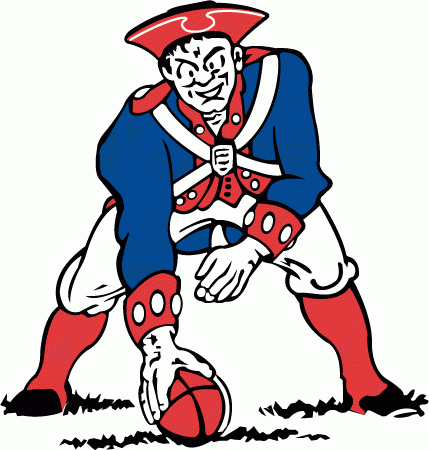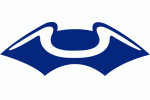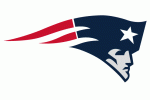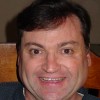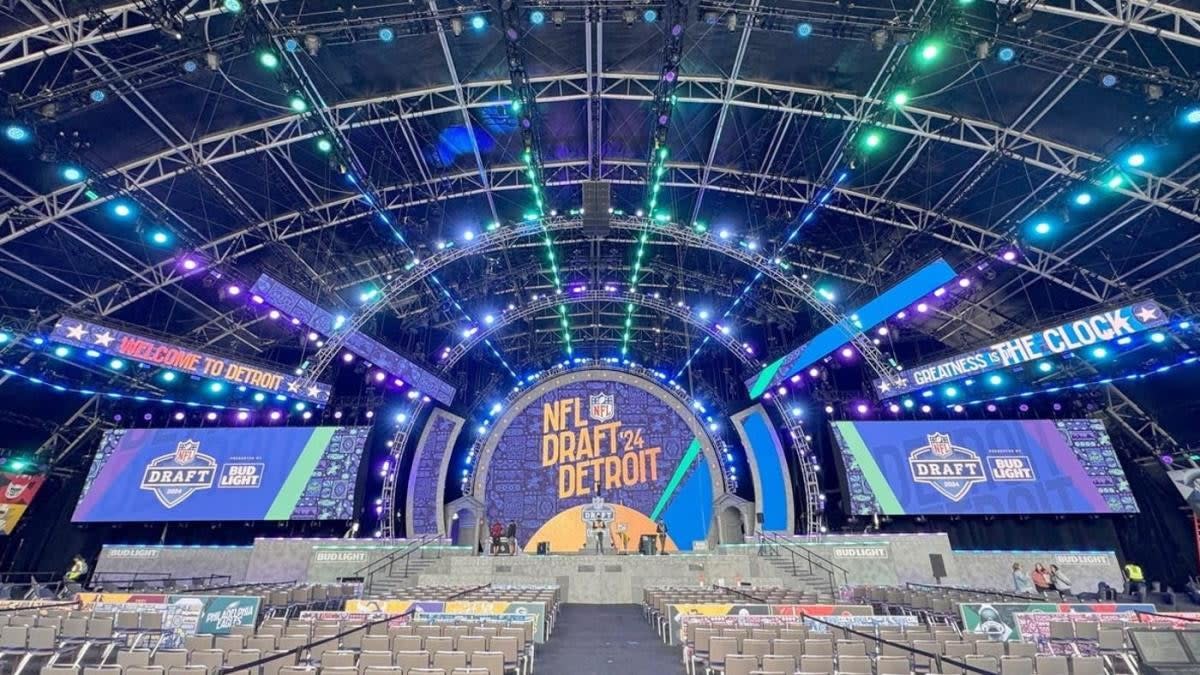The Patriots, Before the Glory
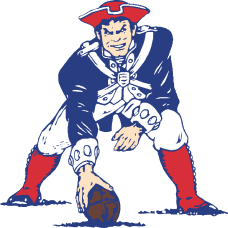
Last January, the Baltimore Ravens defeated the New England Patriots in the AFC Championship Game and went on to win the Super Bowl. The Pats were making their seventh appearance in the AFC Championship Game since 2001. Although I was disappointed they didn't play in the eight Super Bowl in their history, I thoroughly enjoyed watching them in the 2012 season. In fact I've enjoyed them over the last 12 seasons. They are always competitive and have been in the hunt for the Championship every year since 2001. With head coach Bill Belichick, Quarterback Tom Brady and owner Bob Kraft they have built a franchise that is well run, exciting and an example for sports franchises everywhere.
But is was not always this way. Bob Kraft bought the team in 1994. To say the Patriots were a dysfunctional franchise before then would be an understatement. They ranked way behind the Red Sox, Bruins and Celtics in popularity in Boston. Most seasons the team was very mediocre (and sometimes historically bad) Even when they were good, they would still find a way to shoot themselves in the foot. And they were never more than a few months away from their next scandal, disaster or embarrassment. They were a pathetic franchise.
The Early Years
They began play as the Boston Patriots in 1960. They were the eighth and last charter franchise of the fledgling American Football League. The ownership group, headed by Billy Sullivan, had earlier petitioned the NFL for a franchise. The NFL rejected it, citing the fact the pro football had failed in Boston five times previously.
They hosted the first game in AFL history. A 13-10 loss to the Denver Broncos on September 9 1960 at the Boston University field. They finished with a 5-9 record that year, The next year, in a home game against the Dallas Texans, a man dressed in a trench coat, jumped on the field and deflected a pass away from a Texan receiver. Two years later they were in championship contention until the winless Oakland Raiders upset them on the last Sunday of the season. In 1963, they won the Eastern Conference with a middling 7-6-1 record. They lost to the San Diego Chargers 55-10 in the AFL Championship Game.
Like all AFL teams, they operated on a shoestring budget. But the Patriots were underfunded from the beginning and Billy Sullivan was forced to make do. Most AFL stadiums were college fields and older municipal facilities with few amenities. The Patriots were no exception. Through the 1960s they played at Boston University’s Nickerson Field, Alumni Stadium (Boston College) and Harvard Stadium.
But from 1963 to 1968, the Pats played at Fenway Park. Fenway Park is a great venue for baseball, but it is not for football. A season ticket holder recently remarked that his seats were so far away from the action, that sometimes it was hard to tell what was taking place. A large temporary grandstand was constructed each fall after baseball season ended in front of the Green Monster. This raised the capacity of the park to 40,000. But that number was still too low for professional football.
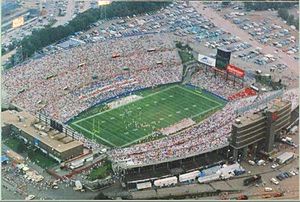
Schaefer/Sullivan/Foxboro Stadium
It was evident a new stadium was needed, especially after the AFL merged with the NFL. A large parcel of land on Route 1 in Foxboro was donated by the owners of the adjacent dog track. Sullivan spent $7.1 million dollars building this facility on that land. Even back then that was a bargain basement price. The old saying “you get what you pay for” was never more true. Schaefer Stadium (In one of the first examples of naming rights, Sullivan made a deal with Schaefer Beer) was outmoded from the beginning. It lacked facilities like luxury boxes, club seats and luxury locker rooms and was obsolete by the 1990s. It was also very uncomfortable. Most of the seats were backless, aluminum benches that were torture in the hot sun and the frigid cold.
The stadium was built in 11 months. The first game was an exhibition game in August 1971 against the New York Giants. At the time Schaefer Beer’s slogan was “when you’re having more than one.” Many people must have taken that to heart and had more than one because midway through the game, the sewerage system began to back up. All the sinks and toilets began to overflow. When the Foxboro Board of Health threatened to shut the stadium just before the regular season started, Billy Sullivan hired an emergency team to solve the problem. To prove to the Board of Health, the sewerage problem was fixed, Sullivan organized the “Big Flush”. Patriots employees were stationed strategically around the stadium and on his signal all the toilets were flushed. This time there was no backup.
Schaefer/Sullivan/Foxboro Stadium was built with private money and for the first few years, the town and the state did not improve Route 1. Traffic tieups on Route 1 were legendary. Getting to and from the game was a major headache.
A common activity was for fans to arrive at the parking lots early and tailgate. That left the opportunity for many of the spectators to drink heavily. Patriots fans had a reputation for being drunk and ill mannered. I remember going to an exhibition game in the mid 1980s and seeing at least 5 drunken fights in my section alone. Patriots games were not for children. After a very rowdy Monday night game in 1981, the Town of Foxboro refused to let the team schedule another game on a Monday night until 1995.
******
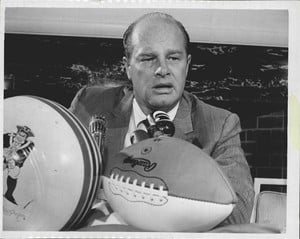
Clive Rush
Rush was a career college coach and pro assistant. He was the offensive coordinator for the New York Jets and designed the offense that upset the Baltimore Colts in Super Bowl III. The Patriots hired him as their head coach in early 1969. At a press conference early in his tenure as head coach, he grabbed a defective microphone and suffered a five second shock that left him briefly stunned. Rush was not a very good coach. In his tenure, he had constant run ins with his players, media, ownership and league officials. In 1969 he led the Patriots to a dismal 4-10 record. In 1970, they started out well with a victory over Miami in the first game. They then proceeded to lose their next 6 games. During the sixth game, a particularly painful loss to the Buffalo Bills, Rush left the stadium with an irregular heartbeat. Two days later he resigned as head coach. With the exception of one year as coach of a small college team years later, he never returned to coaching.
Roughing the Passer
In 1974 the Patriots started out by winning their first six games and holding on to finish 7-7. The injury bug plagued them through the next year but in 1976 the team caught fire. Led by former Oklahoma coach Chuck Fairbanks and first year quarterback, Steve Grogan the Patriots rolled to an 11-3 record and their first playoff game since 1963.
The playoff game was against the Raiders in Oakland. The Patriots played well and were up 21-17 late in the fourth quarter. The Raiders began to drive, and found themselves on the Patriots 27 yard line with 59 seconds left in the game. On 3rd and 18, Raiders quarterback Ken Stabler threw an incomplete pass. But referee Ben Dreith called a Roughing the Passer penalty on Patriots linebacker Ray Hamilton. The Raiders had another chance and Ken Stabler scored on a quarterback keeper to win the game. As seen on the video (see below) Hamilton bumped into Stabler, but did not rough him. It would be a controversial call even today, but in 1976 it was ridiculous. Even Stabler, in an interview several years later admitted it wasn’t roughing. Various theories abound about why that call was made. It is alleged that Dreith and Raiders owner Al Davis were good friends but it has never been proven that Dreith made that call to benefit his friend. Because of this controversy the league never scheduled Dreith to officiate another Patriots game again. He retired in 1990. (Karma would come back and bite the Raiders squarely on the ass twenty five years later on what in New England is known as the “Snow Bowl”. Elsewhere it’s known as the “Tuck Rule Game”)
1978
The New England Patriots were good in 1978. Led by Grogan, the Pats offense had a running game anchored by Sam “Bam” Cunningham and great receivers like THE Russ Francis, Stanley Morgan and Harold Jackson. The offensive line was anchored by future Hall of Famer John Hannah and the defensive backfield had 4 first round draft choices. They were arguably the best Patriots team on paper in the Billy Sullivan era.
The season did not begin hopefully. In an exhibition game against the Oakland Raiders in August the young Patriots wide receiver Daryl Stingley dove for a pass. In a move that today would garner a lengthy suspension and large fine, Raider, Jack “They call me Assassin” Tatum launched his body at the defenseless receiver. The collision was awful. It snapped Stingley’s neck. He never walked again.
Despite this tragedy, the team had a very good season finishing 11 - 5, capturing their first AFC East Championship and earning the first home playoff game in franchise history. But before the last game of the season against Miami, coach Chuck Fairbanks announced he was breaking his contract to take the job as head coach at the University of Colorado.. Billy Sullivan immediately suspended him and the Pat lost miserably to the Dolphins 23-3.
Sullivan reinstated Fairbanks for the playoffs, but the damage was already done. The heavily favored, but unprepared and distracted Patriots were embarrassed by the Houston Oilers 31-14.
The next couple of years were marked by good starts and disastrous finishes which precluded them from returning to the playoffs. A local sportswriter said they “played like clowns in the clutch”. In 1981 the Patriots had one of their worst seasons, finishing 2 - 14.
The coach Ron Ehrhart was fired and replaced by former SMU coach Ron Meyer who in turn was replaced by Raymond Berry midway through the 1984 season.
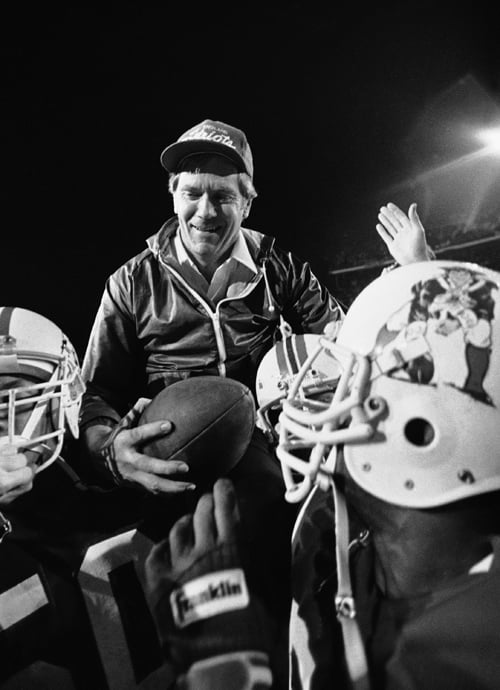
1985
In 1985, the team finally won the AFC Championship and went to the Super Bowl.But characteristic of the Patriots, it was one of their weirder seasons. The regular season went smoothly, for the most part. Tony Eason and Steve Grogan shared quarterback duties as the Pats compiled an 11-5 record. But strange and weird events happened late in the season
After losing a heartbreaker in Miami, the Patriots returned to Sullivan Stadium to face the Cincinnati Bengals. With a victory over the Bengals, the Pats would earn a playoff spot. They won 34-23. After the game overly enthusiastic fans stormed the field, tore up the turf and tore down the goal posts. In a move worthy of a Darwin Award nomination, some fans decided to take the steel goal post with them. They dragged it down Route 1. They didn't get very far when the metal pole touched a high tension wire. Five fans were electrocuted, one fatally.
The playoffs started well with the Patriots dispatching their rivals, the New York Jets 26-14. The next playoff game was in Los Angeles where the Patriots squared off against the Raiders. They forced six turnovers and beat the Raiders 27 - 20. The Patriots GM, Billy Sullivan’s son Patrick, heckled Raiders linebacker Howie Long from the Patriot sideline all through the second half. After the game, as the two teams were walking off the field, Long and Sullivan had words. Another Raiders linebacker, Matt Millen, hit Sullivan from behind with his helmet. Sullivan was dazed. Later Long called Sullivan, “the jellyfish of Foxboro” and “a classless slob”.
The victory over the Raiders put the Patriots in the AFC Championship Game on the road against the Miami Dolphins. They had lost 20 straight games on the Dolphins home field (including a division showdown there just weeks earlier), but this time they prevailed 31 - 14. It was the greatest win in Patriots history (up to that time). But the Patriots All Pro receiver, Irving Fryar, sat out the game with his hand in a cast after he suffered what was reported as a “kitchen accident”. The day after the game it was revealed that his wife had stabbed him in the hand after he pushed her to the floor. He would recover from his injury to play in the Super Bowl and score a meaningless touchdown late in the game.
The Patriots played the Chicago Bears in Super Bowl XX in New Orleans. The Patriots jumped out to early 3 - 0 lead and then watched as the Bears scored 44 unanswered points. The great Bears defense pounded the hapless Patriots holding them to only 7 yards rushing for the whole game. Starting quarterback Tony Eason, was knocked out of the game and didn’t return. He was never the same again. The 46 - 10 loss was the worst drubbing any team had taken in Super Bowl history.
After a loss that bad it could not get any worse right? Wrong. The day after the Super Bowl, Boston Globe sportswriter, Ron Borges, published an article which said that Irving Fryar, cornerback Raymond Clayborn, running back Tony Collins and safety Roland James were drug users. There were also allegations that linked Fryar to gambling. Despite these distractions, the Patriots won the AFC East title in 1986 with another 11-5 record. They were eliminated in the first round of the playoffs by the Denver Broncos
Sullivan Sells the Patriots to Victor Kiam
In the late 1980s, it was evident the New England Patriots and the Sullivan family were bleeding money. The Sullivans had made several bad investments (including producing the Jackson 5 tour). In 1988 Billy Sullivan, who owned the Patriots since it’s inception, sold the team to Remington Products magnate Victor Kiam. Sullivan Stadium (formerly Schaefer Stadium) went into bankruptcy and was bought by Bob Kraft.
1990: Rod Rust, Lisa Olsen and Hart Lee Dykes
After going 5 - 11 in 1989, Kiam hired former Pittsburgh Steelers defensive co-ordinator Rod Rust to turn his team around. He failed. In 1990, the Patriots had their worst season ever, going 1 - 15. But they made the news for another reason. In the locker room the day after their only win of the season, three Patriots, Zeke Mowatt, Michael Timpson, and Robert Perryman sexually harassed and verbally assaulted the Boston Herald reporter Lisa Olson. Victor Kiam called her “a classic bitch”. The league fined the team and the players (although Boston Globe writer Jackie McMullen said the players fines were never paid). She left the Herald soon after and moved to Australia.
One evening in 1990, Irving Fryar and 2nd year receiver Hart Lee Dykes were at a Providence area bar. They had a disagreement and fought. Sometime in the fight, Fryar punched Dykes in the eye, causing permanent damage and ending Dyke’s career.
James Busch Orthwein
Somehow the Patriots survived 1990. Rust was fired and replaced by the former head coach of Syracuse, Dick MacPherson. MacPherson invigorated and improved the Patriots to 6 - 10 in 1991, but in 1992 they reverted back to 2 - 14 and MacPherson was fired.
Also in 1992, Victor Kiam sold the team to James Busch Orthwein. The scion of the wealthy Busch beer family, Orthwein bore an uncanny resemblance to Otis the Drunk from the old Andy Griffith Show. Being from St. Louis, he intended to move the team to his hometown.
The first thing he did was to change to logo from the old “Pat Patriot” to the modern “Flying Elvis”. The helmet was changed from white to silver and the uniform was changed. He also hired 2 time Super Bowl winning coach, Bill Parcells and drafted Drew Bledsoe as the first pick of the draft.
In 1993, after losing 11 of their first 12 games, the team won the last 4 games. Interest in the Patriots was high. In early 1994, Orthwein attempted to clear the hurdles to move the team to St Louis. But the stadium owner, Bob Kraft, refused to let the Patriots out of their lease. Orthwein became frustrated and put the franchise up for sale. Kraft bought it for a whopping $175 million.
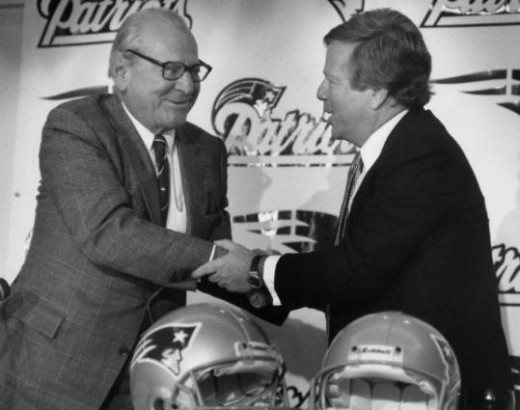
Bob Kraft and Bill Parcells
Under Parcells and Kraft, the Patriots made the playoffs in 1994 only to lose to the Bill Belichick coached Cleveland Browns. After a down (6-10) season in 1995, the Patriots went to their second Super Bowl the next year. It was rumored that the relationship between Kraft and Parcells was strained. Parcells wanted more say in personnel decisions. All Super Bowl week, it was speculated that Parcells would be the next head coach of the New York Jets. The game was won by the Green Bay Packers, but unlike Super Bowl XX, the Patriots were respectable. It was thought that the Patriots were just outplayed by a superior team. When Parcells resigned from the Patriots and it was revealed that the team was distracted and unprepared, fans were livid. Like Chuck Fairbanks 18 years earlier, Parcells had given up on the Patriots just as they were on the brink of something special.
Parcell’s replacement was Pete Carroll. Carroll took a Super Bowl team and over the next three seasons the team finished with a worse record than the last. In 1999, the team finished out of the playoffs for the first time since 1995 and Carroll was fired. Kraft hired Belichick, who in turn drafted Tom Brady. We all know what happened next.
*******
It’s hard to believe that the first 40 years of the Patriots franchise was so dysfunctional and bizarre. Other teams have had strange things happen to them, but it seems as though the Patriots had more over the years. I can appreciate the present success of the team because I can remember when they were a train wreck. I‘ve often wondered if young people take their success for granted because they have not seen any different. What we are seeing now is truly special. I don’t take it for granted.
